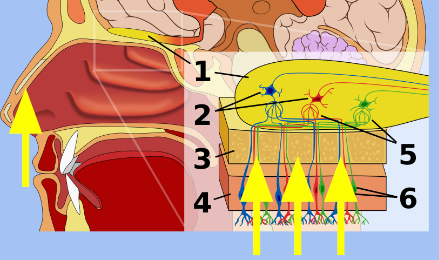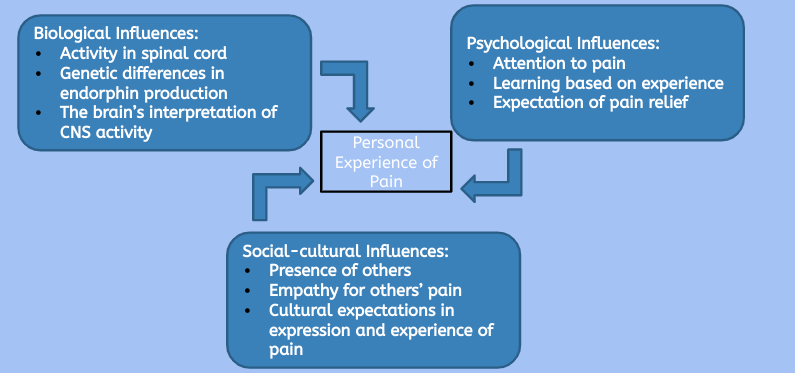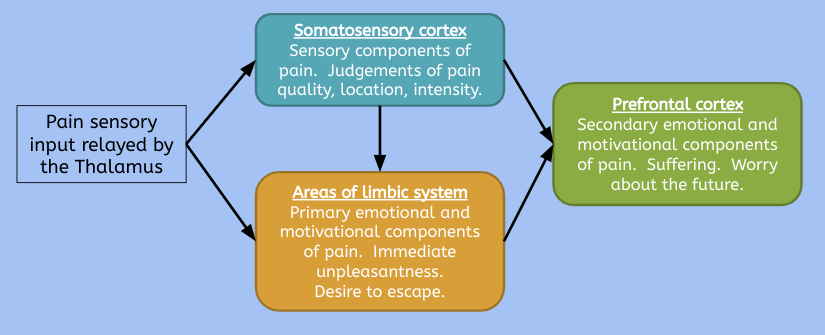3.6-3.7 : Other Senses
CHEMICAL SENSES
GUSTATION: Taste is a chemical sense because a substance is what is detected (not just energy like in sight and hearing)
This is done through our taste buds
Taste buds regenerate approximately every two weeks, “supertasters” are individuals with more papillae (therefore more taste buds) on their tongues.
Tastes: Traditional tastes sensations consisted of 4 tastes; sweet, sour, salty, and bitter.
OLFACTION: Like taste, smell is a chemical sense. odorants (molecules of the object you are smelling) enter the nasal cavity to stimulate 5 million receptors to sense smell.
The olfactory epithelium is responsible for detecting odorants, and is at the roof of the nasal cavity about 7 cm above and behind the nostrils.
Humans can detect about 10,000 odors.

1- Olfactory Bulb
2- Mitral cells
3- Bone
4- Nasal Epithelium
5- Glumerulus
6- Olfactory Receptor Cells
Olfactory receptors in the nasal cavity regenerate approximately once a month.
SMELL AND MEMORY
- The hippocampus (where memories are stored) is very close to the olfactory bulb (processing of smells) which can explain why certain smells can invoke memories.
SENSORY INTERACTION
- When one sense affects another sense, sensory interaction takes place. The taste of fruits interacts with its smell and its texture on the tongue to produce the taste.
BODY SENSES
SKIN AND BODY (SOMATIC) SENSES
Sense of touch is a mix of four distinct skin senses..
- Pressure
- Temperature
- Vibration
- Pain
PAIN: Pain tells the body that something has gone wrong. Usually pain results from damage to the skin and other tissues. There is a rare disease in which a person feels no pain..known as congenital insensitivity to pain (one of the HSAN disorders)
Main Features:
- Lack of pain sensation
- Injuries
- Inability to sweat
- Infection of joints
- Bone fractures
BIOPSYCHOSOCIAL INFLUENCES

GATE CONTROL THEORY:
- Melzak and Wall proposed that our spinal cord contains neurological “gates” that either block pain or allow it to be sensed.
- Substance P - Neurotransmitter involved in the transmission of pain messages.. tells the gate to “open” and send the message to the brain.
SO WHERE DOES PAIN GO IN THE BRAIN?

- Phantom Limb Pain: Pain is not merely the result of stimulation.. Phantom Limb Pain (Sensation) is a condition where amputees feel painful sensations that seem to be originating from the missing body part. Could be due to “cross wiring” in the somatosensory cortex with nearby areas taking over for the missing limb, so stimulation of those parts cause a “sensation” in the missing limb.
BODY POSITION AND MOVEMENT
- The sense of our individual body parts’ position and movement is called kinesthesis. Understanding where your body parts are in regard to each other.
- The Vestibular sense monitors the head (and whole body’s) position in space. This sense is located in the semicircular canals of the ear (the fluid). It is our sense of balance, and knowing when we’re right side up (or not).